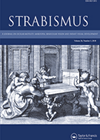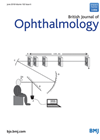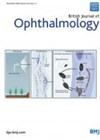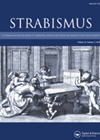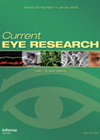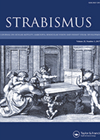You searched for "pupil"
An unusual case of silicone oil in the anterior chamber simulating intraocular implant
Silicone oil internal tamponade has been used for over 50 years, even prior to pars plana vitrectomy [1].Over a course of time silicone oil may migrate to the anterior chamber through the pupil. This may disperse in the form of...Measuring IPD with PlusoptiX
The authors evaluated the accuracy of the PlusoptiX A04 for measuring pupillary distance as compared to measurements taken by a trained optician. This retrospective review included 256 children who had undilated PA04 screening and had pupil distance measurement done by...Navigating the retina: the nitty-gritty of slit-lamp fundus examination
3 August 2023
| Pratik Bikkannavar, Mala Subash
|
EYE - Vitreo-Retinal
The slit-lamp fundus examination can be a difficult and disorientating task for beginners due to the retina being viewed in a non-anatomical orientation, the small area of retina illuminated, and the counterintuitive technique of the examination. This article provides a...
Intracameral mydriasis with Mydrane
1 December 2018
| Jonathan Chan
|
EYE - Cataract, EYE - Refractive
|
Lens And Zonules, Pharmacology, Pupil, Treatment Surgery
The aim of this study is to evaluate the ‘real world’ experience in a UK setting for intracameral Mydrane mydriasis in routine cataract surgery. A prospective consecutive series of 60 patients (group 2) had intraoperative, intracameral Mydrane (tropicamide 0.02%, phenylephrine...
Effect of low-dose atropine on myopia progression
A randomised study to evaluate the effects of 0.01% and 0.02% atropine eye drops (one drop once nightly to both eyes) on myopic progression, pupil diameter and accommodative amplitude in myopic patients. Four hundred myopic children were divided into three...Spot screener versus Grand Seiko measurements
The authors aimed to determine repeatability and reproducibility of refractive values and pupil size measured using the Spot Vision Screener and to compare its measurement values with the Grand Seiko autorefractor. This was a cross-sectional study of 22 healthy adults;...Introduction of the Mydriasert insert at the Manchester Royal Eye Hospital
The authors report on a study to examine the effects of the Mydriasert insert on time, effects, patient comfort and tolerability at Manchester Royal Eye Hospital. Mydriasert is an insoluble ophthalmic insert indicated for mydriasis prior to ophthalmic surgery, which...How to examine the visual system Part 2: Accommodation, pupils, fundoscopy and additional tests
1 August 2014
| Emma Linton, Apostolos Fotakakis
|
EYE - Vitreo-Retinal
Examining the visual system can be a tricky skill for medical students to master, yet it is a task that is frequently tested in examinations. This is the second of a two-part series of articles, which together aim to improve...
A novel computerised portable pupillometer detects and quantifies relative afferent pupillary defect
1 February 2016
| Jonathan CP Roos
|
EYE - Neuro-ophthalmology
We have all had referrals from A&E telling us that a patient can’t see out of one eye. Sleepily we may ask “Is there an relative afferent pupillary defect (RAPD)?” to evaluate the seriousness of the presentation. The response is...

